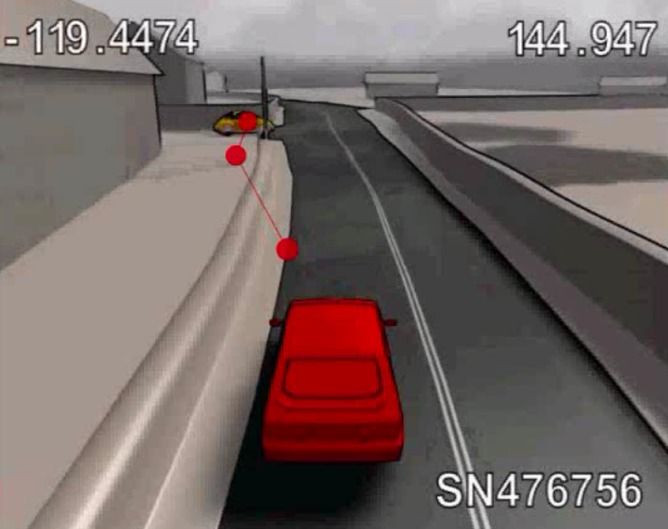
Computer-Generated Images Influence Trial Results (Op-Ed)

This article was originally published at The Conversation. The publication contributed the article to LiveScience's Expert Voices: Op-Ed & Insights.
Recent cases involving the use of computer generated images as evidence in courtrooms have shown the powerful impact they can have on jury decision making. But studies show that jurors can be unduly influenced by these images and videos.
The case over the murder of British student Meredith Kercher is a particularly high-profile example that highlights the way in which computer-generated exhibits can be used to “fit” the evidence. The successful appeal of Amanda Knox and her co-defendant Raffaele Sollecito called the validity of the graphic animated sequence used in the trial into question since it was based on flawed forensic evidence in the first place. The case showed the importance of having reliable forensic evidence to support the content of an animation before deciding to use it in a trial.
What are the rules here?
One of the surprising issues to arise in debates on the admissibility of computer generated exhibits is that there are very few formal guidelines on appearance, content and style. In the US, where they are more frequently used, standards set a range of guidelines for the acceptance of expert, technical and scientific evidence. However, even in the US, the judge generally decides what is and isn’t admissible. This means that there is substantial variability in the acceptance of computer-generated material at trial.
This raises a number of concerns. I have demonstrated that by manipulating often minute and discrete variables in these images and videos that they can exert wildly different results. This suggests that the variation in presentation styles and technology used will undoubtedly create problems for jurors and other legal decision makers.
Easily swayed
Alongside the ambiguity over the legal standards of animated evidence, there has been relatively little empirical examination of the potential impact using evidence of this kind might have on trial results when compared to other ways of offering evidence to a jury.
One early experimental study, presented participants with a number of hypothetical scenarios based around an equivocal suicide. The overall premise under investigation was whether the deceased had fallen or jumped from a roof of a building. This was established by looking at the distance of the body from the edge of the building. If the body was found at between five and ten feet, it is more likely the person might have slipped and fallen. A longer distance of around 20-25 feet would suggest they had jumped.
Sign up for the Live Science daily newsletter now
Get the world’s most fascinating discoveries delivered straight to your inbox.
Participants were shown computer-generated images that either supported or contradicted the premise that the deceased had fallen. They either showed the body as landing near or far away from the building. Of most concern in this case was the fact that a significant number of participants believed that a falling object – in this case a human who had fallen – could land 20-25 feet from a building when the computer-generated evidence suggested that this is what had happened. Ultimately, this led to the suggestion that people are poor intuitive physicists and easily influenced by computer generated images.
The study did also show, however, that when the physical evidence was congruent with the animated sequence, the video evidence served to improve juror decision accuracy. This implies that, when used correctly, animated evidence can be useful.
Depends which way you look at it
There is also evidence that juries might react differently to animated evidence depending on the perspective from which it is presented.
In my own research, manipulating the “angle of view” in an animated vehicle accident demonstrated stark differences in culpability judgements. When participants were presented with an animation of a car crash that depicted the situation from overhead, they were more likely to conclude that the driver of one car was at fault. If the animation was presented with an in-car perspective, they appeared more likely to conclude the other driver was at fault.

With more sophisticated VR evidence – where jurors can take on an interactive “first-person” role – understanding the potential psychological impact of this technology is vitally important to ensure fairness and proportionality.
Lessons to learn
At a basic level, jurors and other legal decision makers must be made aware that these exhibits are merely a representation of one potential sequence of events. Clearly, the vivid and easily compressible nature of these demonstrations can be linked to hypothesised models of jury decision making and could – in some circumstances – encroach upon the ultimate issue and extend beyond their intended probative value.
Psychological theories and research methodologies have a great deal to offer the courts and legal profession in relation to CGE. Just as it seems incredible that we would have once put a child witness in a courtroom or introduced relatively unqualified “experts” to offer advice, so it may also be that we allowed sophisticated techniques of persuasion to form part of legal trials without any real safeguards or guidelines in place.
Gareth Norris does not work for, consult to, own shares in or receive funding from any company or organisation that would benefit from this article, and has no relevant affiliations.
This article was originally published at The Conversation. Read the original article. The views expressed are those of the author and do not necessarily reflect the views of the publisher. This version of the article was originally published on LiveScience.












